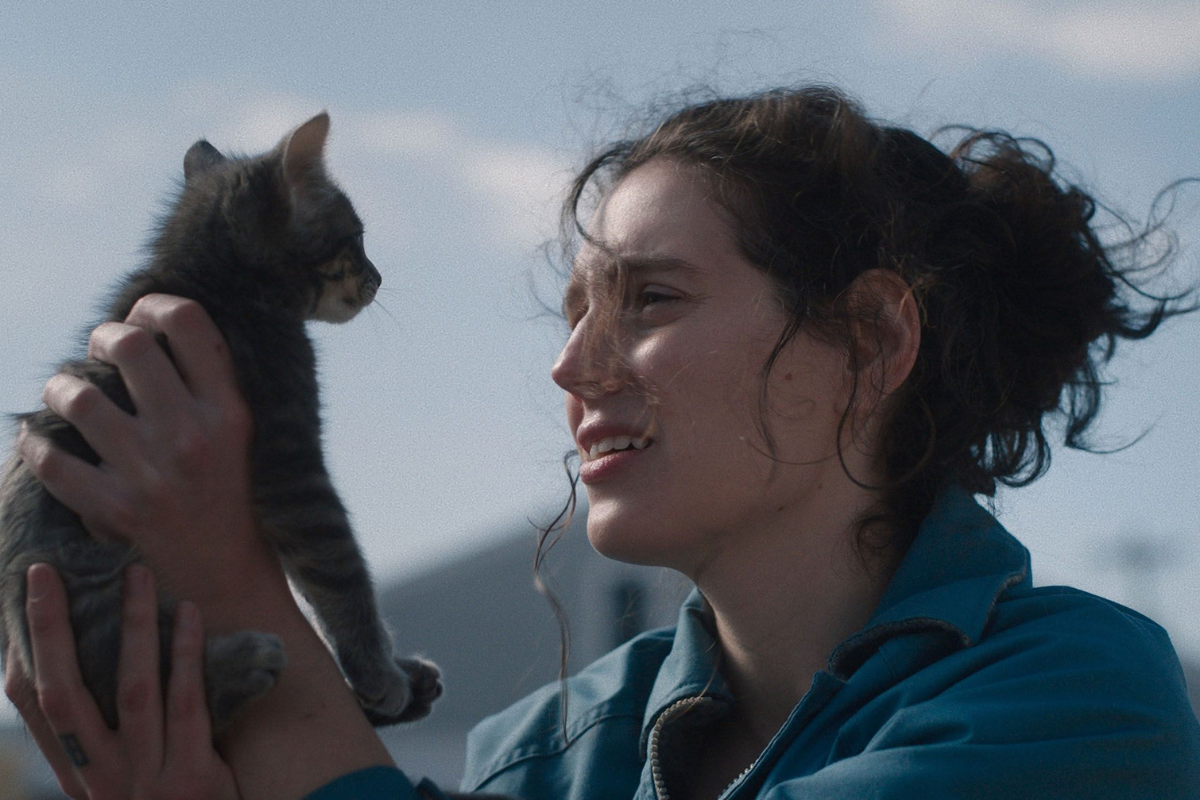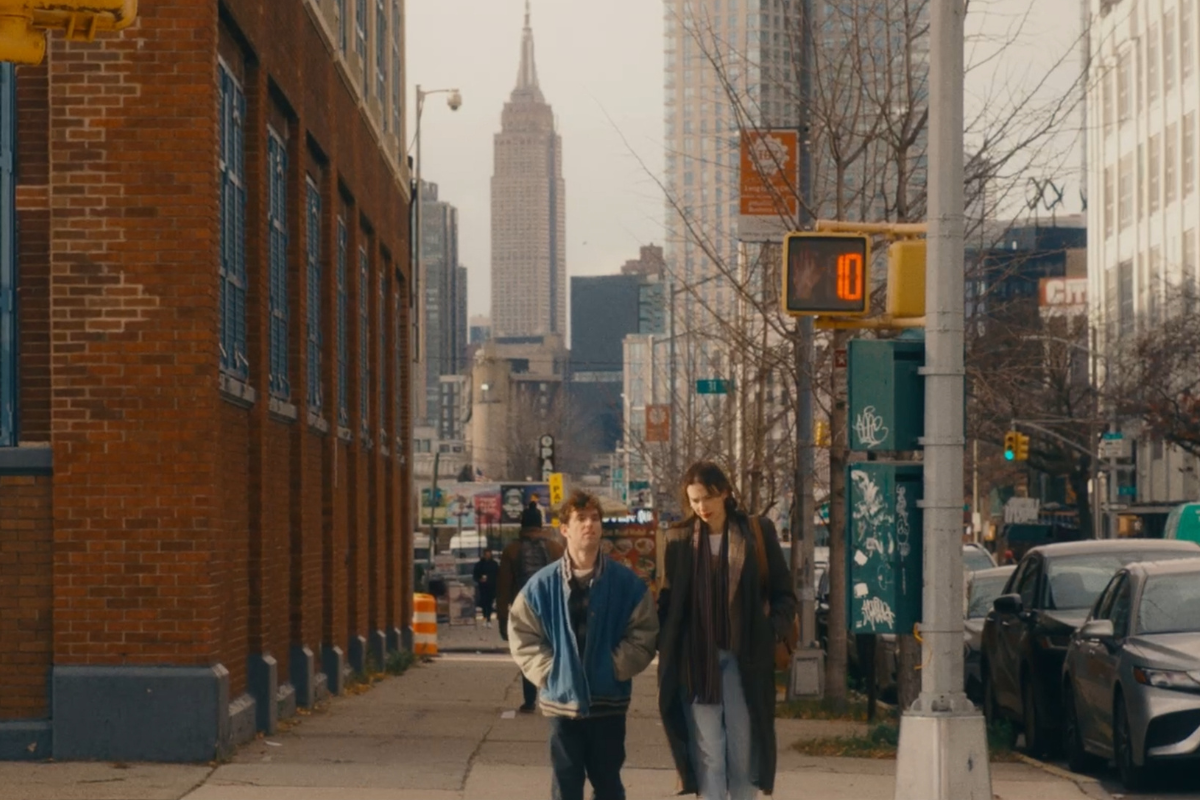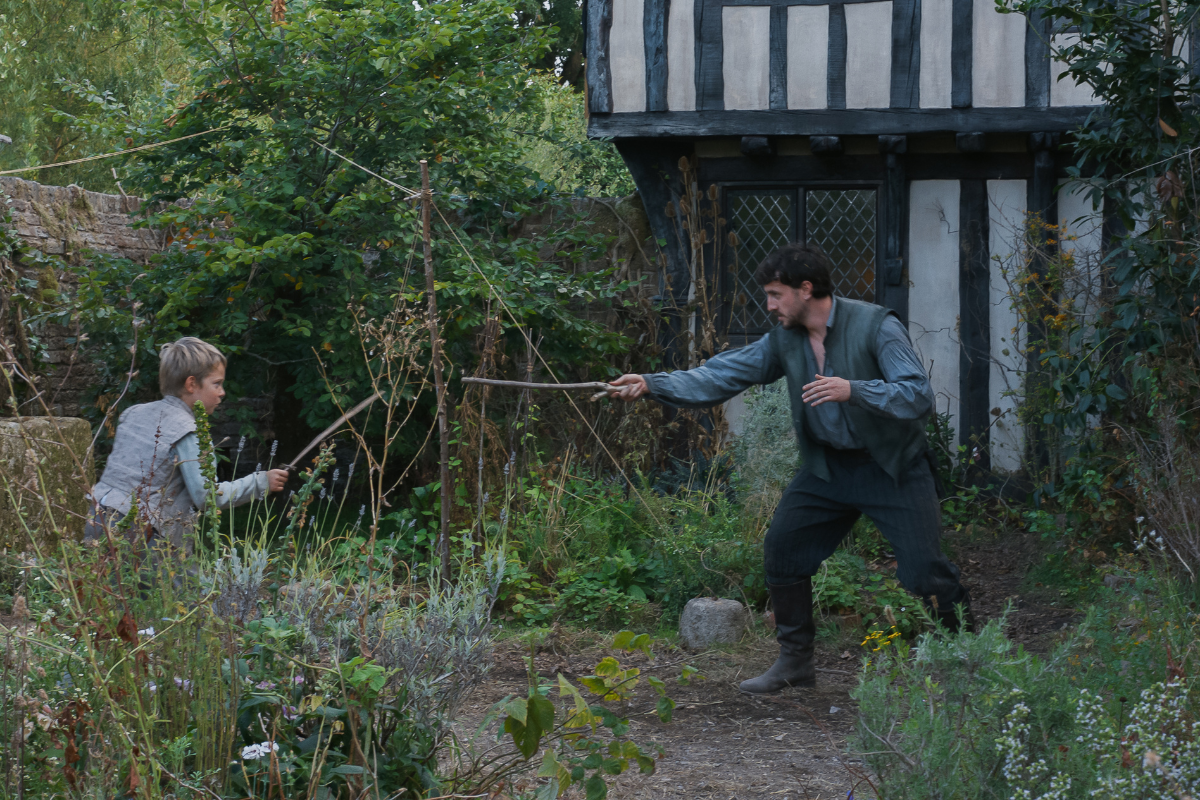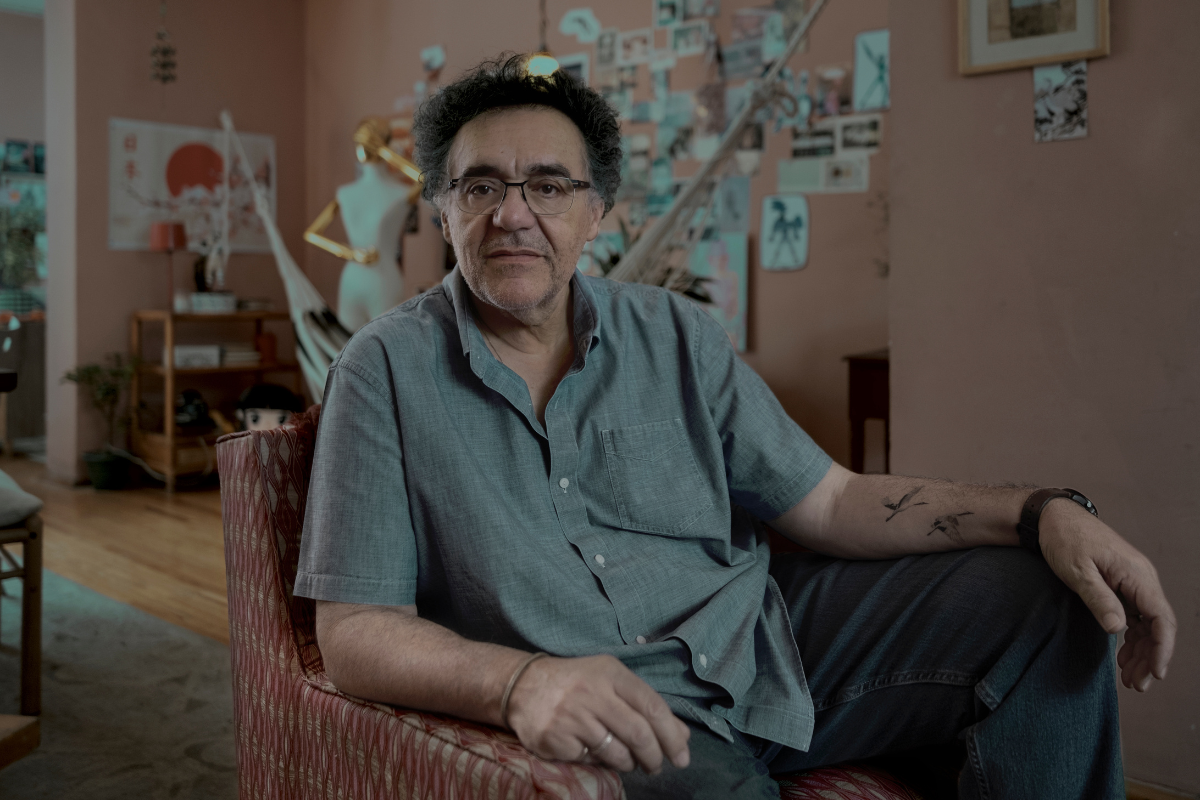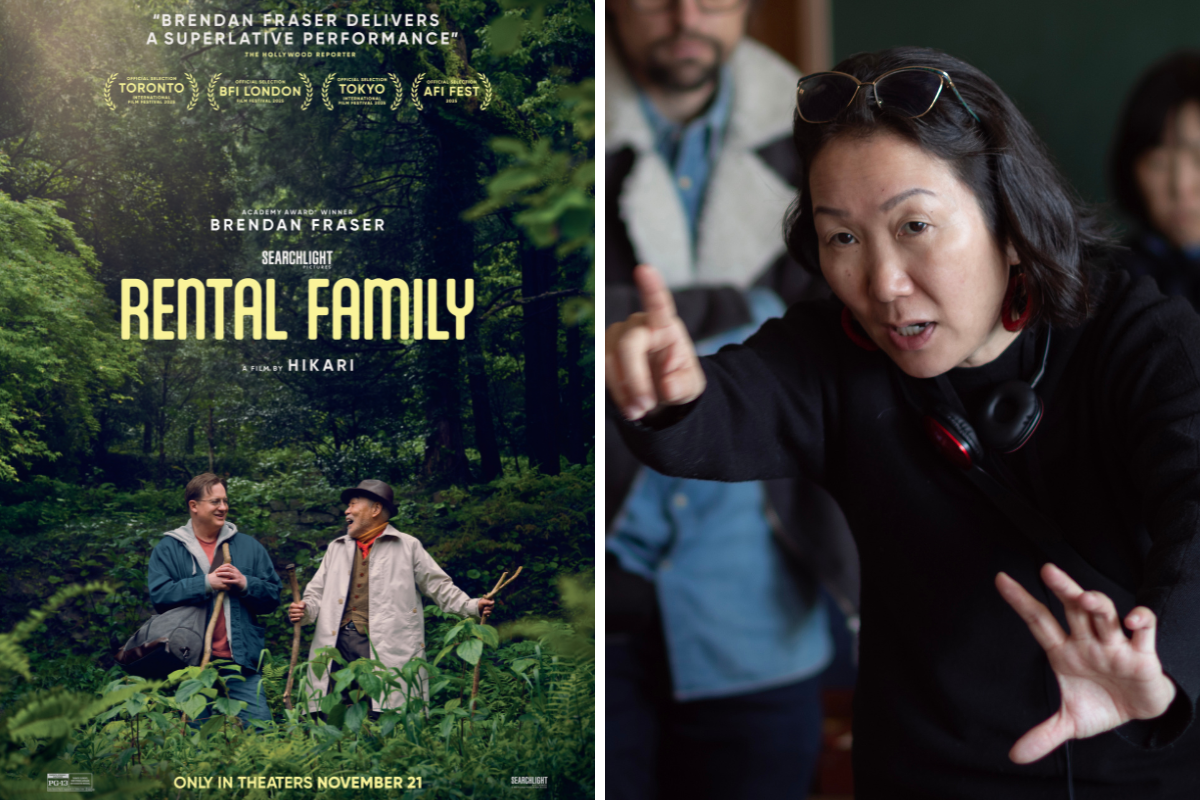Honoring the Language of ‘Poker Face’ with Showrunner Tony Tost
Showrunner Tony Tost discusses the creative process behind the second season of ‘Poker Face’.
Poker Face is a mystery-of-the-week series following Natasha Lyonne’s Charlie, who has an extraordinary ability to determine when someone is lying. She hits the road with her Plymouth Barracuda and with every stop encounters a new cast of characters and strange crimes she can’t help but solve.
Tony Tost discussed with Script the creative process behind showrunning the second season of Poker Face. From the importance of maintaining the show’s 1970s new Hollywood sensibility while incorporating classic TV elements, his collaboration with the writers’ room and mastermind Rian Johnson, and the heartbeat of the series, Natasha Lyonne. Plus, he discusses the production turnaround and the detailed integration of music and his favorite part of the filmmaking process – post-production.
Sadie Dean: Thrilled I get to chat with you again, and especially for this show, which feels like it was specifically created for you to come over and take on as showrunner. Taking over the second season, how were you able to maintain that tonal consistency from season one? Obviously, you had access to Rian [Johnson] and of course, the heartbeat of this whole series, which is Natasha [Lyonne].
Tony Tost: When the door kind of opened for this, because I think this is actually the first time I've ever threw my hat in the ring to run somebody else's creation or show, usually, I write my own thing and try get going and stuff like that - but there was so much overlap in what season one pulled off, in terms of this kind of 1970s almost, American New Hollywood sensibility, but also embracing classic weekly TV, as opposed to chasing a kind of prestige coolness of actually going back...but seeing how you can make that feel relevant to the present day.
And so, when I came in, it was just like, ‘OK, I love season one, legit, how do I not fuck it up? How do we do more of the same?’ But just explore new types of episodes, because each episode, in a way, is its own little world, it's own little mini movie, which takes work and which takes big brain trust.
Once I had the job, we assembled the room, and me and the writers would come up with ideas. Couple times a week, Rian would come in for a few hours, we pitch it at him, and then he'd come back and put his Rian Johnson spin on things and come up with some great stuff. And then we'd go back, and it was just that kind of back and forth. Natasha would come in too, sometimes, to weigh in, because the show lives and dies on Charlie, obviously.
And then going into production, it's trying to just keep the machine running and keep the sensibility alive and the intentions of the writers' room, but while still allowing room…that’s really when I think Natasha shines, she comes in, brings her sensibility, the soulfulness that she gives it, and then it breathes in a new life to it. And it's kind of the melding of Rian and Natasha’s sensibilities that I think makes the show unique and work. My job is just to do what I can to help conduct that kind of marriage of their sensibilities.
Sadie: I’m sure it feels both like a blessing and a curse, because they're so good at what they do, and not help but think to yourself, ‘How do I make sure I don't mess this up?’
Tony: Yeah. You get 10 days to do an episode, and we were really lucky to get really great guest stars. And then, yeah, you just kind of try to prepare, writing-wise - interesting characters, situations, scenes. And then let the actors come in, the directors and the crew do their magic, and then just kind of be there to guide it if it seems to be straying away from what the story wants to be and all that. I was pretty excited about how it turned out, and how we're able to kind of do this season. Hopefully, just exploring, more of what you could do with Charlie, and with the format of the show.
Sadie: And speaking of that, what's so fun, at least from a writing perspective, is that that puzzle of, how do you set up that murder, and then when does she come in? We already know as an audience, we know everything, but you could go in so many directions with how she comes in and solves the murders. What was that process for you and the writers’ room of laying that out, so that it doesn’t feel like a paint-by-numbers episode to episode?
Tony: We'll often start with the storytelling world and an idea either of a murder or a reason for that act one of, before Charlie even comes to it. We need to care about these characters enough for us not to be looking at our watch waiting for Charlie to show up. And that's our in. And then, well, what's Charlie doing there? That's often fun. What takes the most work in the room, I found is – it’s kind of a four act structure: the opening without Charlie, is the murder; then act two is we see Charlie, and we kind of catch up, and we see what she's doing there in her relationship; then act three is the murder has happened, and it usually appears to be just an accident, or whatever the case is. And then by the end of that act, Charlie has figured out who did it. And then act four is what is she going to do about it?
Act Three is the toughest. Act Three is one: how do we get her on the trail? Because she doesn't know she's in a murder show. So, how do we get this person who's just kind of trying to live her life, even though she comes across all these murders? How do we get her to care about this? And then how do we get her to understand and figure out without just over relying on her bullshit detector and get that. But at the same time, it's got to move, it's got to be funny, it's got to be dramatic. There's a lot of trial and error in particular in that act three spot, that's where we kind of bang our heads against the wall the most.
Sadie Dean: It reminds me of the episode you wrote, “Hometown Hero” a seemingly simple premise, but there’s that impending doom, it's not safe, and you're kind of scared for her. You want her to get out of there.
Tony: Yeah, why does Charlie put herself in these positions? She's like a dog with a bone when she's on it - she can't help it. She's compelled; she's got to get to the truth of what actually happened. There is a nice little tension there in those scenarios, especially when you see her and someone that you've seen kill somebody else, see them alone in a dark practice arena like they are in that episode.
Sadie: Another thing that's so great about the show, and it carries over from the first season, the use of music and just how it's so foundational for this show. From a producing point of view, and also writing, are those songs written into the script, or are they placed as temp tracks in a rough cut or something a director will eventually bring in?
Tony: All the above. Sometimes, as early as the outline stage, we will have needle drops in there. And then sometimes they're placeholders, and sometimes they either don't work, or they do work, or you can't afford them. [laughs] And then other times, sometimes the directors will bring it in. And then sometimes you find it in the edit when you're trying to get the vibe going.
Before the season, I put together a Poker Face Season Two playlist of songs that I thought kind of fit the vibe of the show and shared that with post. So sometimes, the editors would go into that and pull something and put that in. And a fairly good number of those ended up in the final edits. And then sometimes Rian brings something in, or it can come from anywhere. Sometimes, the writer has something from the get-go, and it ends up in there. And then other times it's trying to see what fits and what we can afford way down the line at in the post process.
Sadie: As a showrunner on this show, what was the most surprising challenge, but maybe also the most creatively fulfilling for you?
Tony: I think I didn't quite fully realize coming in that, because Charlie's on the road, that every 10 days we're tearing down the show and starting from scratch. Charlie is the one character that shows up. So, every 10 days, we've got to recast the entire show, we've got to find locations, build sets, props, wardrobe - everything. And then we do that for 10 days, and we tear it all down, and we do the next one. Just the sheer logistics of that while trying not to drop the creative ball, because 10 days an episode, it's not HBO length, but most of the shows I've worked on were like seven or eight days. I just thought, 'Oh, this will actually be a little bit easier.' But the other shows, they're standing sets, and it's a recurring cast, and so you're not having to find 15 actors in a couple days type of thing. So that was definitely the big challenge.
My favorite phase, no matter what, is I love the post-production phase. I love being in the cutting room. To me, that's just writing, but it's writing with performance, story, with time, with feeling, with music, with everything. That is the most rewarding.
And I think the nice surprise is, I think there was real overlap between myself and Rian's sensibility. It's Rian's creation. It's his brainchild, and it's the marriage of him and Natasha's sensibility. But it's really, at the end of the day, it's ultimately his vision of the show. And I think I was kind of happily surprised about how much our editorial tastes, instincts, kind of overlapped. My goal would be to just get the ball as close to the end zone as I could. When I hand over the cut to Rian, it's never going to be like, 'I'm not going to change a thing,' but I'd be pretty close.
And so, I could really, kind of get my kind of heart and soul into it and solve whatever scene problems or performance problems that may be there, or structure things. And then Rian comes in and puts his magic on there, and that was really, really rewarding. And plus, I just like post. It's lower stress. It's writing, but with friends, just a couple of people in a way. And the editorial team on this show is lights out, and so that was a real pleasure.
Sadie: You’re also director, and you have such a great eye, and knowing that you guys had 10 days for production, in terms of like coverage, did you ever have to have conversations with your directors about making the shots for the day or specific coverage for post?
Tony: The nice thing with coming into a show that I think established itself and its style in season one, we had the same cinematographers carry over, and some of the same directors. Rian directing an episode, Natasha directing too. That was very rarely an anxiety or something I had to talk about. It was more like everything else. The camera was very rarely a concern. Maybe the only concern would be, like, 'we do only have 10 days guys,' but there's a cleverness and an ambition to the camera, which I think is great on the show.
About the only element for me would be like, ‘OK, is this a scene where we really kind of have an elaborate camera move, or is it one where we kind of try to cover more and try to have options in terms in the edit?’ But I didn't find myself too anxious about kind of getting it, because the DPs really know the show.
RELATED: Stories That Are Thematically Linked: A Conversation with ‘Americana’ Writer-Director Tony Tost
This is a show that has a lot of inserts, because it's so clue-based on objects and stuff. And so, it's almost like, almost every episode we go back, we have producing director Adam Arkin, or sometimes even Rian, 'Just spend a day and just get a hand grabbing this, or a shot of this.' Sometimes in post, because if it's an object that has to do with the murder or how Charlie's going to solve it, those objects, or the things she notices, they need their own, almost like, close-up in a way. So, in prep, I would provide to the directors and the DP like, ‘Here's the writers' room suggested insert list of objects in this episode of what Charlie is going to be noticing as we do it.’ And then kind of leave it up to the directors and the DPs to, 'You guys creatively tell that story of those objects.' Some directors, especially if they don't do a kind of clue-based storytelling, have a little bit of an aversion to doing inserts, but it's the language of the show.
Season 2 of Poker Face is streaming on Peacock.
Sadie Dean is the Editor of Script Magazine and writes the screenwriting column, Take Two, for Writer’s Digest print magazine. She is also the co-host of the Reckless Creatives podcast. Sadie is a writer and filmmaker based in Los Angeles, and received her Master of Fine Arts in Screenwriting from The American Film Institute. She has been serving the screenwriting community for nearly a decade by providing resources, contests, consulting, events, and education for writers across the globe. Sadie is an accomplished writer herself, in which she has been optioned, written on spec, and has had her work produced. Additionally, she was a 2nd rounder in the Sundance Screenwriting Lab and has been nominated for The Humanitas Prize for a TV spec with her writing partner. Sadie has also served as a Script Supervisor on projects for WB, TBS and AwesomenessTV, as well as many independent productions. She has also produced music videos, short films and a feature documentary. Sadie is also a proud member of Women in Film.
Follow Sadie and her musings on Twitter @SadieKDean


